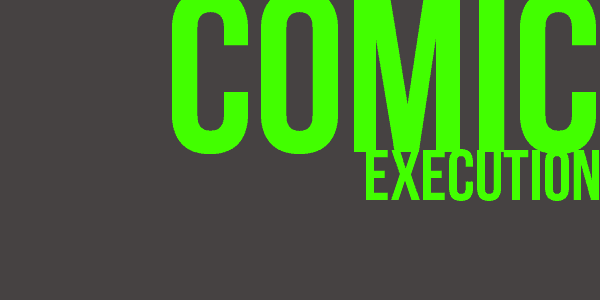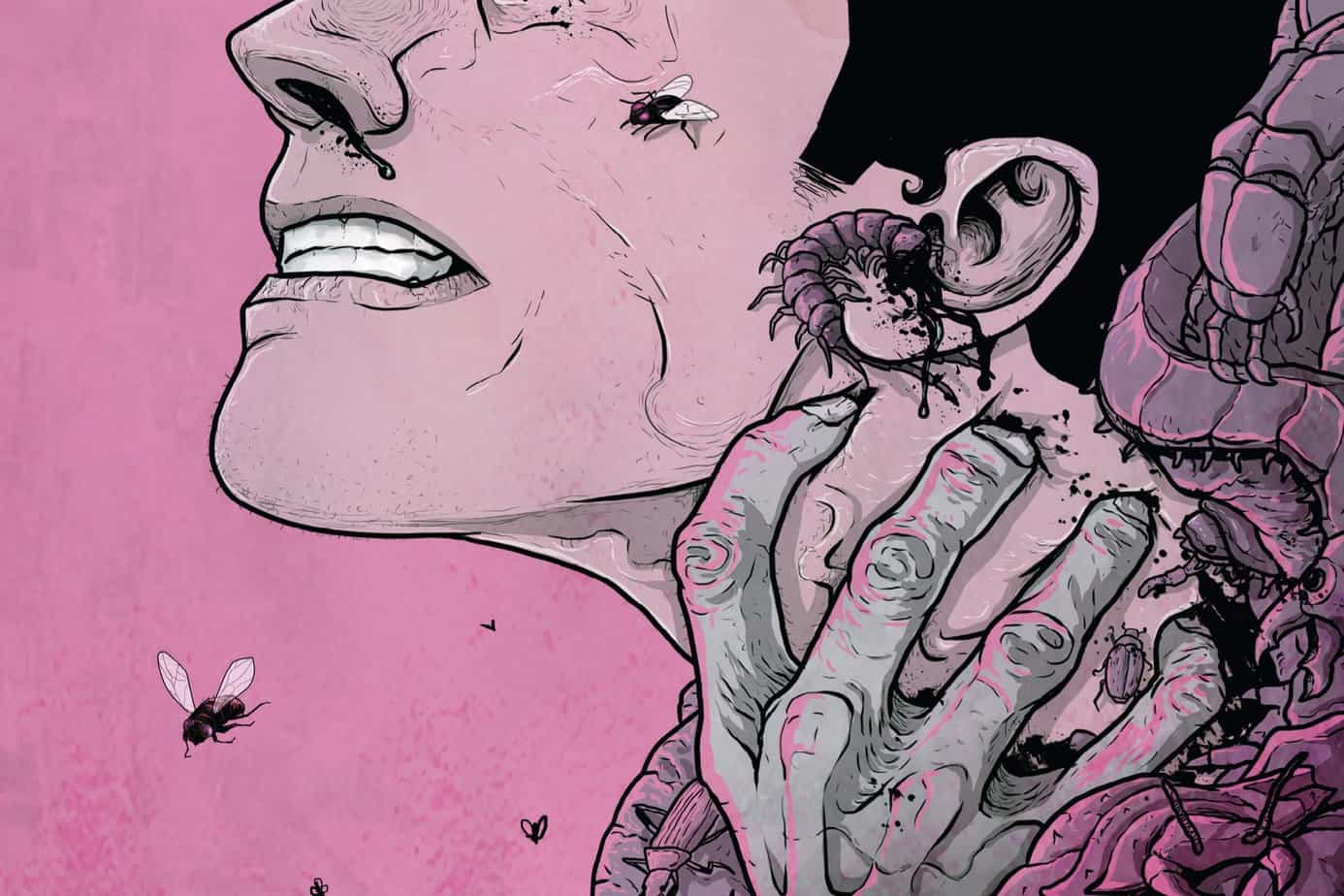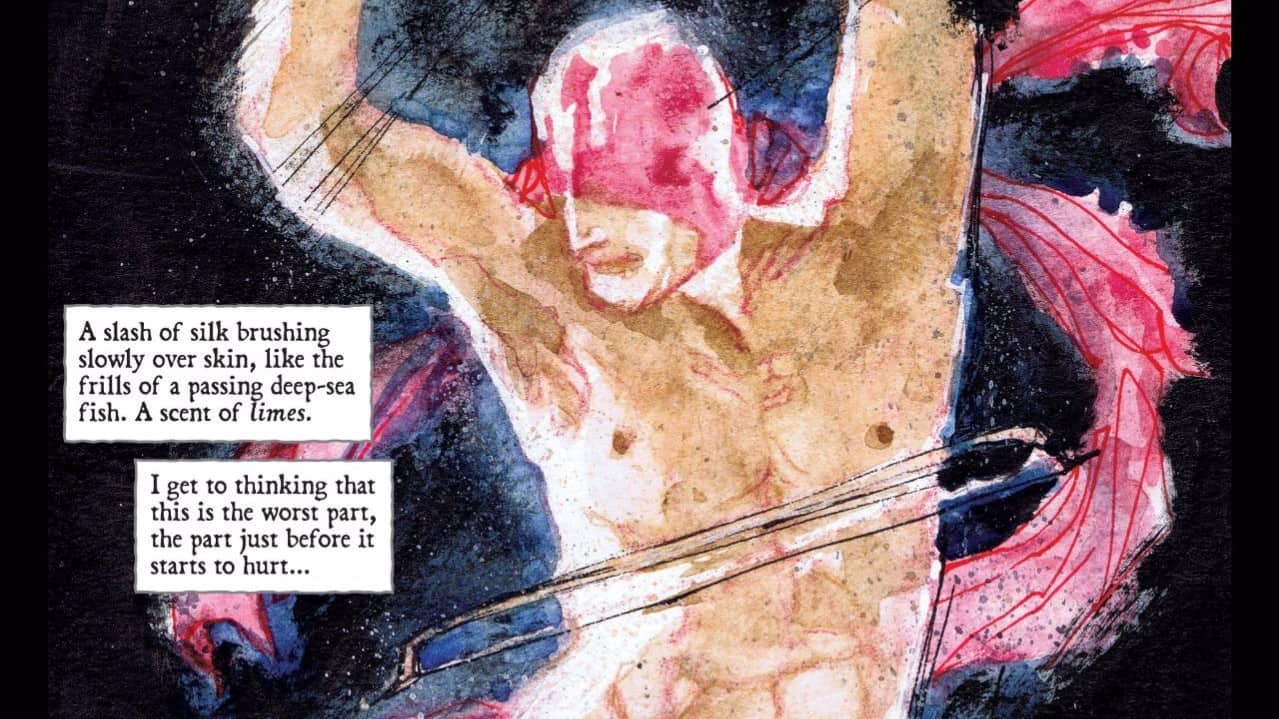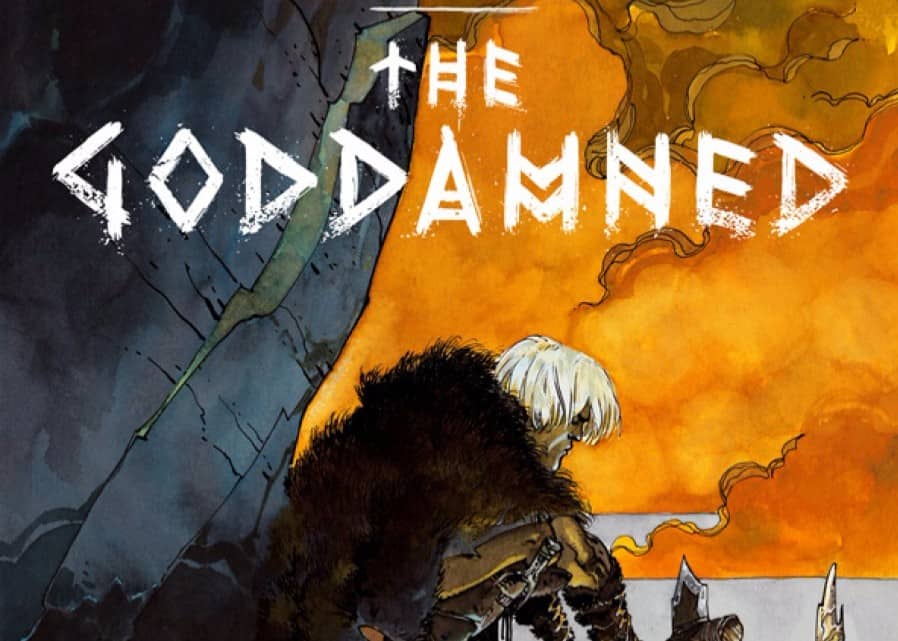
[Comic Execution] 6/27 – TREES, MARS ATTACKS: FIRST BORN, NIGHTBREED
I SCREWED UP.
Thanks to the kindly efforts of MARS ATTACKS: FIRST BORN author Chris Ryall, I’ve become aware that Comixology has been unintentionally misleading me. Really, if anything, I’ve been misleading myself but I refuse to take ALL the blame because, well, who actually does that, ever? Regardless, it turns out I’ve been sorely mistaken on the page count for several comics, including MARS ATTACKS: FIRST BORN, because two-page spreads are only counted as single pages in Comixology’s reader. As a result, the previous issue of MARS ATTACKS: FIRST BORN was actually a perfectly fine 21 pages and not a mere 20, as I said in my review. I didn’t discover this until after I’d already written this week’s review of MARS ATTACKS: FIRST BORN but in the interest of transparency, I left in my comments about the page count.
The worst part is that I can’t help but wonder if I’ve executed a series with my mistaken page count being a major factor because how awful would that make me? I’m going to have to comb through my archive and find out if this is the case and apologize to those I stupidly condemned to my comic book graveyard.
 MARS ATTACKS: FIRST BORN #2
MARS ATTACKS: FIRST BORN #2
Writer: Chris Ryall
Artist: Sam Kieth
Publisher: IDW Publishing
Price: $4 (Digital)
You know what’s weird about MARS ATTACKS: FIRST BORN? Despite being an intensely grim, emotionally devastating horror story about survival in an apocalypse-ravaged landscape, it’s listed by Comixology as being a appropriate for ages 12 and up. I mean, technically it is, since there’s not really any horrifying violence (yet) or anything obscene or explicit but if you let a thirteen-year-old read this comic, they’re probably going to insist on wearing a foil hat afterwards and good luck getting them to leave the house.
The first issue introduced us to the unlikely family of Clare, “Uncle” Woody and the tiny Martian she calls “Baby.” Yes, for those of you who missed my last review, the little girl has adopted a mini-Martian. Needless to say, this has some pretty terrifying implications, which manifested at the end of the previous issue with the second coming of the Martians. The narrative starts off this issue by switching focus to a couple of neighborhood boys and it comes with its own emotional rollercoaster; they’re essentially adopted by a pseudo-catatonic widow and she provides for them while they try to fill the shoes of the men who would’ve protected the remnants of the town. Their discovery of Baby is predictably dramatic but Ryall defuses cliche by allowing these boys to be humans struggling for emotional connections amid the rubble, their easy friendship with Clare being quite the tear-jerker, even as we learn from Clare about the strange behavior of the Martians who came back, twisting the plot a bit further.
In this way, Chris Ryall, the writer, doesn’t linger too long on the development of these kids as friends and more story beats drop, promising either a tearful reunion or a tragic loss, reminding us how bleak the stakes are. But the real tensions comes from a surprising source as one of the adults reveals some worrying motivations behind a facade of friendliness. Ryall seems specifically determined to trap these kids in a world where the adults are barely capable of survival and the childish fantasies they protect themselves with is perpetually under threat. It’s a hard read, honestly, because Ryall manages to infuse all the cast with authentic humanity, despite the grimly inhuman setting, making the last page hit that much harder.
Sam Kieth’s art is part and parcel of this heart-rending narrative. He retains his expressive lines and the gray, smudgy palette that defines the unhappy tone of the series. There are some really great moments, such as the child-like drawings that Kieth crafts when Clare and the boys are relating their stories to each other, that no other artist could pull off. Though there also some panels where Kieth’s art seems child-like at the wrong times. Or maybe just cartoonish. But that’s because those are warmer, more tender bits in the story and it helps accentuate the highs and lows. That said, there’s also some shortcuts being taken here: one panel in particular looks like it was copy-pasted from the previous issue (and, in fact, it is). A flashback later on in the book drops the art quality to the bare minimum, lacking the precociousness of Kieth’s earlier imitations of children’s drawings. While Kieth’s definitely still doing a great job where he can, this issue also feels like less work went into it.
And that extends to the size of the book as well; the last issue was 20 pages, this one is only 18. And it’s no cheaper than the last one. At this point, I honestly feel like we’re paying too much for these single issues when they’re this light on content, particularly when it feels like Sam Kieth has lost some energy with this issue. But Ryall’s writing is still perfect and it’s not like Kieth isn’t knocking it out of the park in the right places, so we’ll see about a third issue. If things don’t improve (I’m looking at an upped page count, since IDW never seems to go below $4 an issue) with the next release of MARS ATTACKS: FIRST BORN, I’m executing it.
EDIT: So, uh, thanks to writer Chris Ryall’s correction via Twitter, I discovered the Comixology lists two-page spreads as an individual page. Which means, as he informed me, that both issues of MARS ATTACKS: FIRST BORN are, in fact, 21 pages of comic. First, let me apologize publicly not just for hastily criticizing this particular comic erroneously but for ALL the comics I have done so grievously a harm. More importantly, let it be known that MARS ATTACKS: FIRST BORN is, with its actual page count factored in, an excellent comic worth your dollars.
NIGHTBREED #2
Writer: Marc Andreyko
Artist: Piotr Kowalski
Colorist: Juan Manuel Tumburús
Publisher: BOOM! Studios
Price: $4 (Digital)
Nope, still haven’t seen “Nightbreed”. As I’ve mentioned in the past, I’m a fan of Clive Barker but I’ve never had the pleasure of witnessing more than a few of his creations. In the case of “Nightbreed,” this started off as a simple matter of being unable to get a DVD of the damn thing, but as I dug deeper into the bowels of Barker’s history with horror cinema, I realized that any viewing I could have at that time would be woefully incomplete, due to the film being unfairly cut by those in charge of such things. Then, lo’ and behold, it was announced last year that a definitive “Director’s Cut” was coming in 2014, being heralded by a distinctly unusual screening event in which every scrap of cut film born from the production of “Nightbreed” was played in a very limited capacity (this being the ravishingly-named “Cabal Cut”). So yes, I don’t plan on seeing “Nightbreed” in any non-comic book format until I get my sweaty grabbers on the pending DVD. So Marc Andreyko and Piotr Kowalski’s adaptation will have to do for now.
The tale, as Marc has retells it, seems to be woven with care at first. The story of the slave couple and their monstrous would-be savior descends into chaos. It’s a hard sell, trying to show how the black slaves could be just as near-sighted and weak as their oppressors without losing our sympathy for their plight, but Andreyko trusts his audience to understand the nature of the unfortunate events that leads to one protagonist’s headlong flight and that’s to his credit. In the case of the inhuman sex worker Shuna, her downfall is less complex but no less tied to the vicious attitudes at the time, ones that still continue to this day in some ways. Her lover Harold, who probably sees himself more as a client than the object of her sexual passion, becomes enraged when he “discovers” evidence of her prior callers. What starts off with the pretense of a cuckolded partner is revealed to be Harold’s twisted lust transforming into a show of power. I don’t know if this scene is taken directly from the film but it’s so powerful; Harold’s really just unable to address his sudden, primitive feelings of insecurity and inadequacy and, as men were prone to doing in that time, responded viscerally with aggression towards that which threatens his masculinity: Shuna herself. The way Andreyko escalates Harold’s rage and how he blindly dismisses her pleas for forgiveness is genuinely painful to witness. The resolution of this conflict had me questioning myself; part of me was horrified at how inevitable the dismal outcome seemed even as I felt a complete lack of pity as well.
Just as the world seems to be closing in around the two outcasts, the plot takes a puzzling turn, with the enigmatic narrator startlingly appearing, deus ex machina, to rescue them. No explanation is given as to how he arranges these miracles and I while I certainly anticipate forthcoming expositions as to how the similarly-inhuman narrator possesses such resources, it doesn’t make their intrusions any less disconcerting. What’s even more puzzling is how the whole of the story seems utterly displaced by the unveiling of a character who the narrator was chatting with the entire time. Given how comparatively normal this guy looks (well, except for the face tats), it’s gonna be a hard sell to get me to care as much about him as the other two protagonists, or even the narrator for that matter.
Piotr Kowalski deserves recognition for pulling off such a rich, tonally dissonant visual spectacle. The broader, more aggressive action taking place in the South requires quite a bit of action. Some highlights include a surprisingly gut-wrenching evisceration with a farm implement and the ever horrifying leg-meets-bear-trap. Contrasting that is the still-bleaker violence in Shuna’s bedchamber, particularly when Shuna’s defensive capabilities come into play, reminding us again that this is a horror story not just of the metaphorical kind, complete with nauseating green skin textures. But there’s a lot of beauty here too, in unexpected ways: in one panel, the red-skinned freak is pushing through the ominously tall marsh grasses beneath a moody, glowing night sky, and the way Kowalski puts us down in a worm’s-eye-view, witnessing a halo of dark clouds circling his blood-drenched crown…
The interior of Shuna’s quarters are, in nearly every panel presented there, given just enough detail to immerse the view in the locale without going overboard, and the dream-turned-nightmare atmosphere is enhanced by the candlelit glow hue of the colors, emulated expertly by Juan Manuel Tumburus, and this is a consistent element throughout the book, lending Kowalski’s lines an expressiveness that doesn’t get in the way of his impressive naturalistic realism. As with the previous issue, the panels themselves specifically get out of the way, content to simply contain the widescreen visuals for the most part, and given that this is a comic based off a movie, that’s a wise decision.
This is still a $4 comic, as is par for the course with BOOM! but this issue does a spectacular job of bringing two disparate narratives to an end though their dovetailing into what is apparently a bigger story is a bit worrying but I doubt Andreyko will neglect two characters who’ve come to be as interesting as any in the other books I’ve reviewed.
 TREES #2
TREES #2
Writer: Warren Ellis
Artist: Jason Howard
Publisher: Image Comics
Price: $3 (Digital)
As Warren Ellis is doing TREES, he’s also writing one of the lesser-known Marvel NOW titles, “Moon Knight,” which is interesting. Moon Knight’s definitely a B-lister and while he’s always had the potential to be something more, I had the distinct feeling Ellis wasn’t going to try to elevate him to the status of icon but rather explore what he, personally, could do with the nocturnal vigilante. There’s a very short life span with the work Ellis is doing on “Moon Knight” and while that doesn’t necessarily surprise me, it does seem a bit counter-productive. Why sign on to do a high profile Marvel title only to leave shortly after? Was this Marvel’s decision, based on the expense of having Ellis on-board? Or was Ellis just not interested in investing more time in a property that’s not his own? Either way, it makes the decision to work in this capacity that much more head-scratching.
Maybe Ellis felt like he needed to diversify? That would fit in with his work on TREES, certainly. I’d mistakenly assumed that the first issue would establish the opening settings of Brazil, NYC, China and the Arctic as the primary locales but issue two only maintains one of those, the lattermost. Instead, we Italy and Somalia this time around. The Italian vignette introduces a mysterious new character that, it is implied, will be of a recurring nature, given his obsession with the Trees as well as his startling combat ability. Though, really, there’s no guarantee we’ll see anything of him again, because the next scene, in Somalia, is definitely a one-off that quietly illustrates how much the Trees have utterly altered the landscape (see what I did there) of human politics and power. Bookending both these bits are the continuing adventures of the researchers in the Arctic, one of whom (surprise, a generic boring white dude) is trying to solve the mystery of a black flower blooming amidst the harsh climes.
This is where the story runs into some problems. For researchers, most of them seem incapable of grasping even the basic implication that hey, these flowers are Tree-borne and are alien organism and should be treated as such. There is one, though, who quickly threads that needle for them, standing outside their bickering pettiness. I’m a bit wary of this trope, of the outsider (she’s black, of course) who’s there to solve the problems for her would-be peers because, if Ellis is going in the predictable path I worry he is, there’s going to be some kind of conflict aboard the station and it’ll be down to her and the aforementioned Boring White Guy to “do the thing that needs to get done” or maybe just survive. How refreshing it would be if Boring White Guy was the first to die, huh? Unlikely, though. Obviously I’m a bit bummed that the story of the second issue does less exploring of the world at large and tries to sell me a story that feels remarkably similar to so many other sci-fi thrillers: “The Thing,” “Alien,” “The Abyss,” etc. Let’s hope the next issue doesn’t see that narrative take over the comic entirely but I’m not optimistic about it.
Fortunately, Jason Howard is absolutely doing the best work of his career here, and this is coming from someone who’s steadfastly followed him since his “Astounding Wolf-Man” days. There are two pages of establishing shots near the end of the book, in the Arctic, that absolutely blew me away. But what’s really impressive about them is how majestic their grand expanse FEELS but, upon examination, is remarkably economical in linework. It’s an example of how art can be more than the sum of its parts, which is actually one of the hardest things to achieve in comics like this. It bears mentioning that the pages prior to this are nearly polar opposites; grimy, claustrophobic, dense, dark meetings, bathed in rich purples being assimilated by the shadows. And the way Howard renders the wide open, generous skies of Italy… I feel like if I start talking about how incredible a job ONE GUY is doing on this book, I’ll never stop. And that’s the big point I’m making here; he does the linework AND the colors. No mean feat, that, especially when what results is such stellar art.
This is sort of what I expected, sadly; I just couldn’t see the comic succeeding by balancing the globe-hopping stuff equally with the more tedious, straightforward narrative, because as a rule, the majority of comic readers prefer the familiar over the unorthodox. It definitely makes me sympathize with Warren Ellis’ reticence in the years prior to his current return. That said, it’s still a $3 book with some really great art and prose so get it despite my misgivings with the script.



